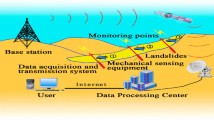
Overview
- This will be the only book available that addresses early warning for geological disasters, with emphasis on earthquakes from a global perspective
- This is the first book that bridges the gap between research for early warning and current experience with early warning in recent cases of earthquakes and tsunamis
- An introduction will summarize the key results of recent work
- Includes supplementary material: sn.pub/extras
Part of the book series: Advanced Technologies in Earth Sciences (ATES)
Access this book
Tax calculation will be finalised at checkout
Other ways to access
About this book
The past years have seen new technologies that could be utilized for early warning and real-time loss estimation. They include self-organizing sensor networks, new satellite imagery with high resolution, multi-sensor observational capacities, and crowd sourcing. From this and improved physical models, data processing and communication methodologies a significant step towards better early warning technologies has been achieved by research.
At the same time, early warning systems became part of the disaster management practice for instance in Japan and Indonesia. This book marks the important point where:
- Research activities continue to improve early warning
- Experience with applications is expanding
At this critical point in development of early warning for geological disasters it is timely to provide a volume that documents the state-of-the-art, provides an overview on recent developments and serves as knowledge resource for researcher and practitioners.
Similar content being viewed by others
Table of contents (19 chapters)
-
Front Matter
Editors and Affiliations
About the editors
Friedemann Wenzel is a professor at Karlsruhe University, head of the Geophysical Institute and the Center for Disaster Mangement and Risk Reduction Technology (CEDIM) and is a founding member of EMI and served on its Board ever since. He is a member of several professional societies (EERI, AGU, SSA), of the Heidelberg Academy of Science and Humanities, and of the German Committee for Disaster Reduction and served as chairman of its Scientific Board between 2000 and 2004. Scientific interests include earthquake physics, engineering seismology, geological hazards, and risk mitigation in megacities.
Jochen Zschau is a professor at the University of Potsdam and director of the Department Physics of the Earth at the Helmholtz Centre Potsdam, German Research Centre for Geosciences (GFZ ). He is president of the European Seismological Commission, one of the leaders of the Indonesian-German Tsunami Early Warning System being set up in the Indian Ocean and coordinator of the EC SAFER project on seismic early warning. His scientific focus is on earthquake and volcanoes research.
Accessibility Information
Accessibility information for this book is coming soon. We're working to make it available as quickly as possible. Thank you for your patience.
Bibliographic Information
Book Title: Early Warning for Geological Disasters
Book Subtitle: Scientific Methods and Current Practice
Editors: Friedemann Wenzel, Jochen Zschau
Series Title: Advanced Technologies in Earth Sciences
DOI: https://doi.org/10.1007/978-3-642-12233-0
Publisher: Springer Berlin, Heidelberg
eBook Packages: Earth and Environmental Science, Earth and Environmental Science (R0)
Copyright Information: Springer-Verlag Berlin Heidelberg 2014
Hardcover ISBN: 978-3-642-12232-3Published: 22 August 2013
Softcover ISBN: 978-3-642-42940-8Published: 26 August 2015
eBook ISBN: 978-3-642-12233-0Published: 13 August 2013
Series ISSN: 2190-1635
Series E-ISSN: 2190-1643
Edition Number: 1
Number of Pages: XV, 379
Topics: Geophysics/Geodesy, Geotechnical Engineering & Applied Earth Sciences, Natural Hazards, Geoecology/Natural Processes



